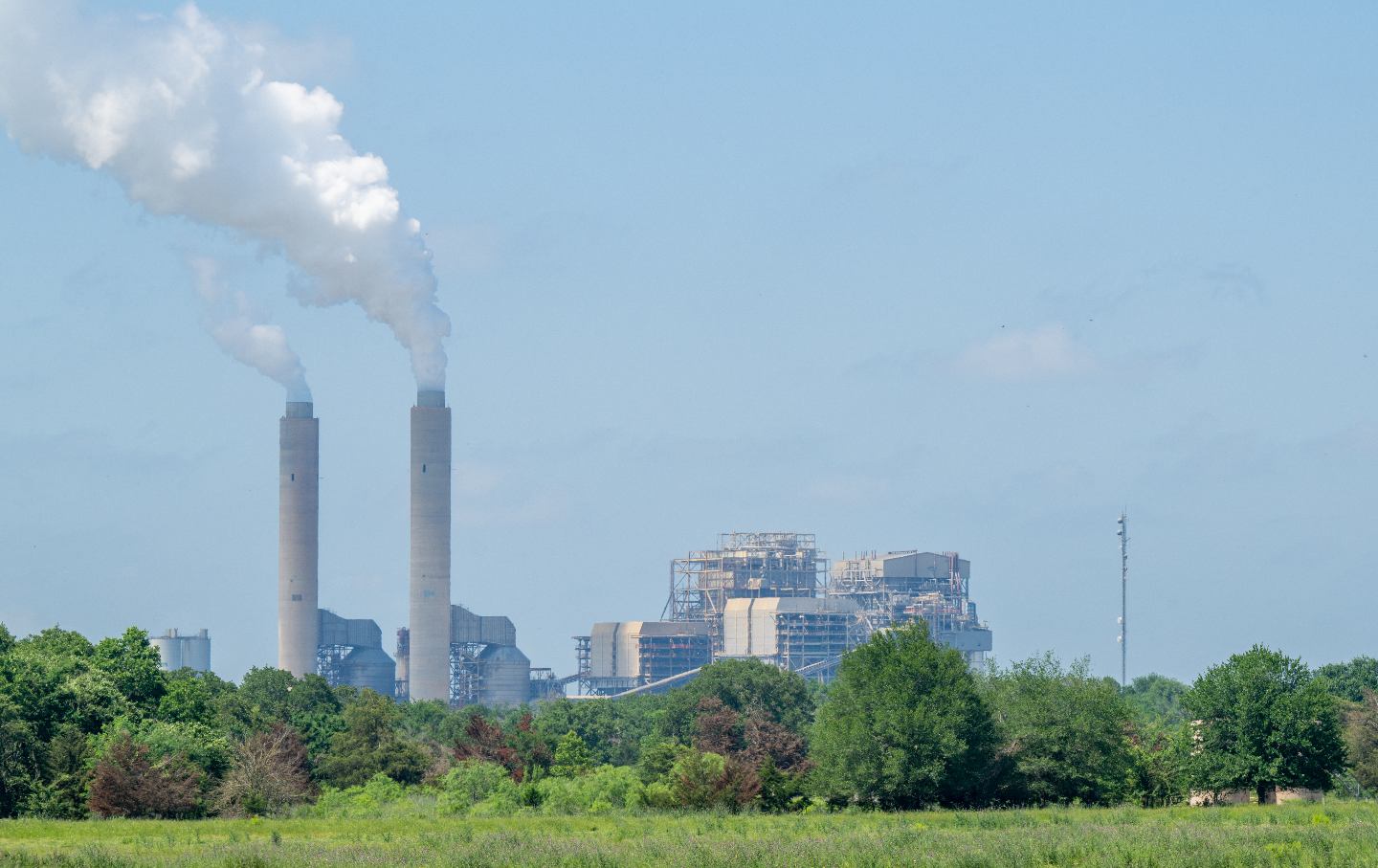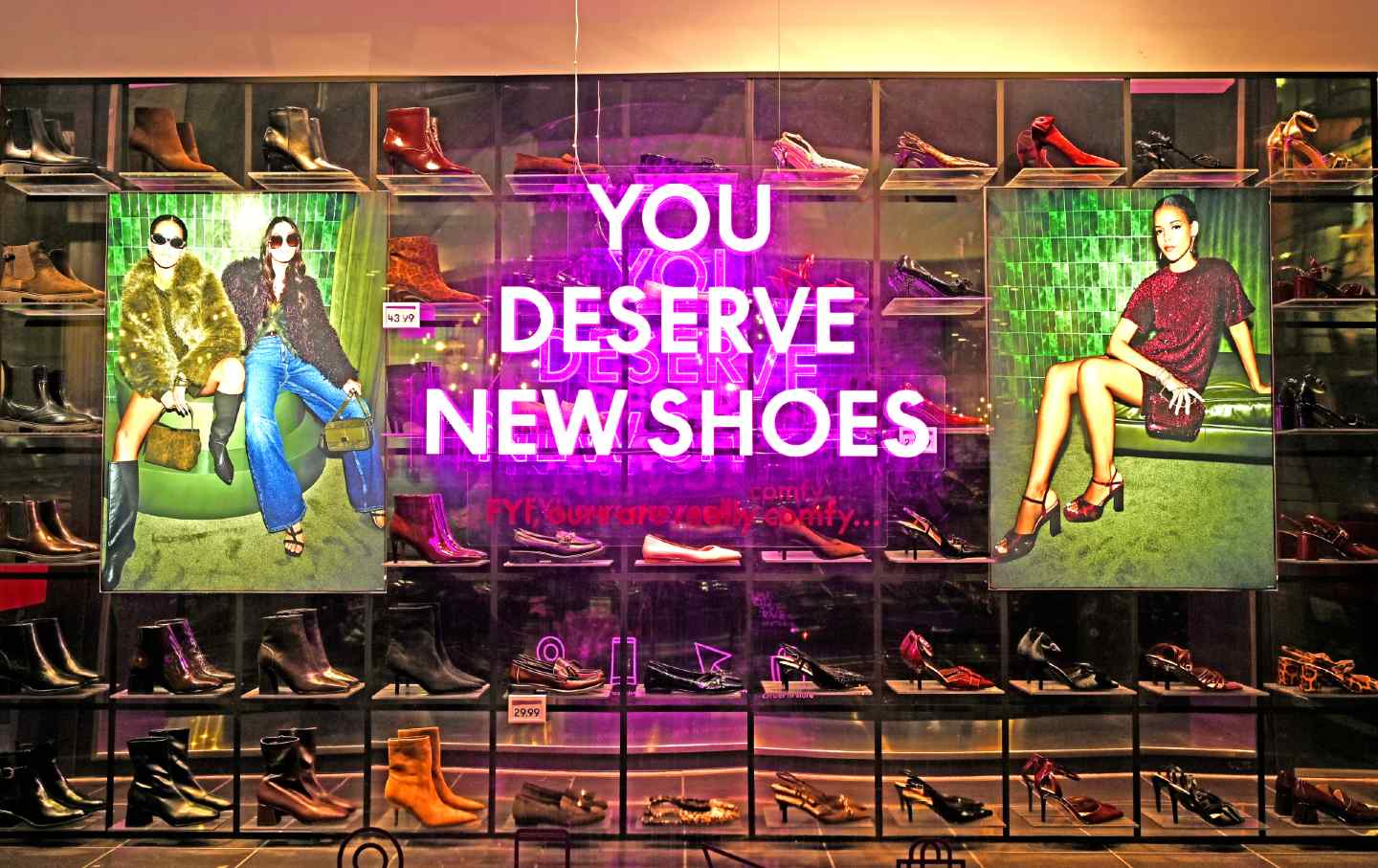The Supreme Court Just Pushed Environmental Justice Even Further Aside
The recently paused “good neighbor” rule was the Environmental Protection Agency’s attempt at reducing interstate pollution by making those responsible pay for it.

Emissions fume at the coal-fueled Oak Grove Power Plant on April 29, 2024, in Robertson County, Texas.
(Brandon Bell / Getty)
On June 27, the Supreme Court paused the Environmental Protection Agency’s “good neighbor” rule. Introduced in 2015, this provision of the Clean Air Act concerned the fact that pollution—particularly air pollution—isn’t contained to the specific zoning of industrial sites.
The rule dealt with the problem of industrial facilities in upwind states contributing to smog and air pollution in downwind states. In doing so, upwind states put the burden of paying for numerous associated health costs on states that are downwind. In short, it was an attempt by the EPA to make those responsible for pollution pay for it.
Like most EPA rules, the “good neighbor” plan was immediately challenged: Industry joined with Ohio, Indiana, and West Virginia—three states that had been ordered to cut down on their energy-producing emissions—to take the rule to court, arguing that it was ineffective and burdened them with excessive costs. The pause is part of the court’s recent diminishing of government agencies’ regulatory power by the conservative majority, along with the overturning of the Chevron doctrine.
While the rule is litigated—likely for years to come—the court is effectively not only allowing the consequences of downwind pollution to continue harming the overall health of certain states but also imposing severe health risks on low-income communities of color who are disproportionately located near industrial facilities. Even if the rule ends up being upheld in other courts, progress will be delayed.
The rule largely addressed air pollution by targeting electric generator units that contribute the ozone-causing chemicals of nitrous oxide (NOx) and particulate matter. According to Kelly Haragan, Clinical Director of the Environmental Clinic at the University of Texas School of Law, the rule not only helps mitigate ozone impacts that can happen farther away from pollution sources but also reduces near-facility pollution exposure.
Historically, those living near the types of facilities the EPA’s rule deals with—mainly power plants, but also cement kilns, steel plants, petroleum refineries, and other chemical plants—are disproportionately communities with low-income people of color. Black Americans in particular were intentionally zoned into areas of low investment and high environmental hazards by historical processes like redlining that still inform modern socio-geographic data.
In 2016, American Progress reported that more than half of the people living within 1.86 miles of toxic waste facilities in the United States are people of color. For Black Americans, the effects are especially disproportionate. In fact, the National Medical Association found that 40 percent of those living near refineries are African American.
Regarding air pollution, which the EPA’s “good neighbor” rule addressed, Black people suffer from the highest air pollution mortality rate largely because of their proximity to hazardous facilities. In general, communities of color experience 7.5 times higher pediatric asthma rates than their white counterparts, according to a 2024 report by George Washington University’s Milken School of Public Health.
“Study after study after study shows that both low-income people and people of color are more exposed to air pollution than other people, and that as a result, they have great health impacts from air pollution than other people,” Haragan added.
By pausing the “good neighbor” rule, the court effectively imposes a heavier environmental burden on these communities. “There are costs to air pollution, and someone’s going to pay those costs,” Haragan said. “We’re forcing the costs of that pollution onto someone else now, onto people who are less able to pay for it.”
Disobey authoritarians, support The Nation
Over the past year you’ve read Nation writers like Elie Mystal, Kaveh Akbar, John Nichols, Joan Walsh, Bryce Covert, Dave Zirin, Jeet Heer, Michael T. Klare, Katha Pollitt, Amy Littlefield, Gregg Gonsalves, and Sasha Abramsky take on the Trump family’s corruption, set the record straight about Robert F. Kennedy Jr.’s catastrophic Make America Healthy Again movement, survey the fallout and human cost of the DOGE wrecking ball, anticipate the Supreme Court’s dangerous antidemocratic rulings, and amplify successful tactics of resistance on the streets and in Congress.
We publish these stories because when members of our communities are being abducted, household debt is climbing, and AI data centers are causing water and electricity shortages, we have a duty as journalists to do all we can to inform the public.
In 2026, our aim is to do more than ever before—but we need your support to make that happen.
Through December 31, a generous donor will match all donations up to $75,000. That means that your contribution will be doubled, dollar for dollar. If we hit the full match, we’ll be starting 2026 with $150,000 to invest in the stories that impact real people’s lives—the kinds of stories that billionaire-owned, corporate-backed outlets aren’t covering.
With your support, our team will publish major stories that the president and his allies won’t want you to read. We’ll cover the emerging military-tech industrial complex and matters of war, peace, and surveillance, as well as the affordability crisis, hunger, housing, healthcare, the environment, attacks on reproductive rights, and much more. At the same time, we’ll imagine alternatives to Trumpian rule and uplift efforts to create a better world, here and now.
While your gift has twice the impact, I’m asking you to support The Nation with a donation today. You’ll empower the journalists, editors, and fact-checkers best equipped to hold this authoritarian administration to account.
I hope you won’t miss this moment—donate to The Nation today.
Onward,
Katrina vanden Heuvel
Editor and publisher, The Nation








